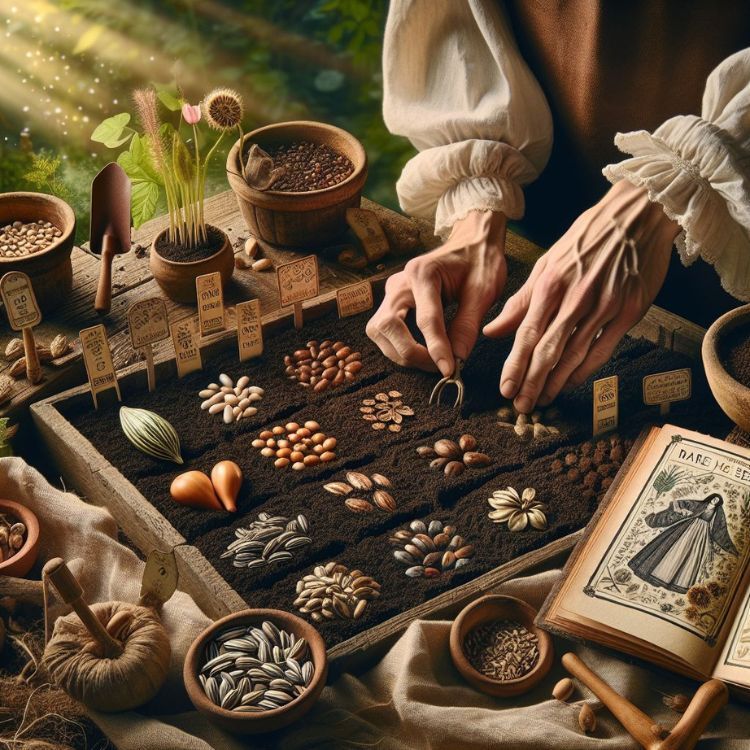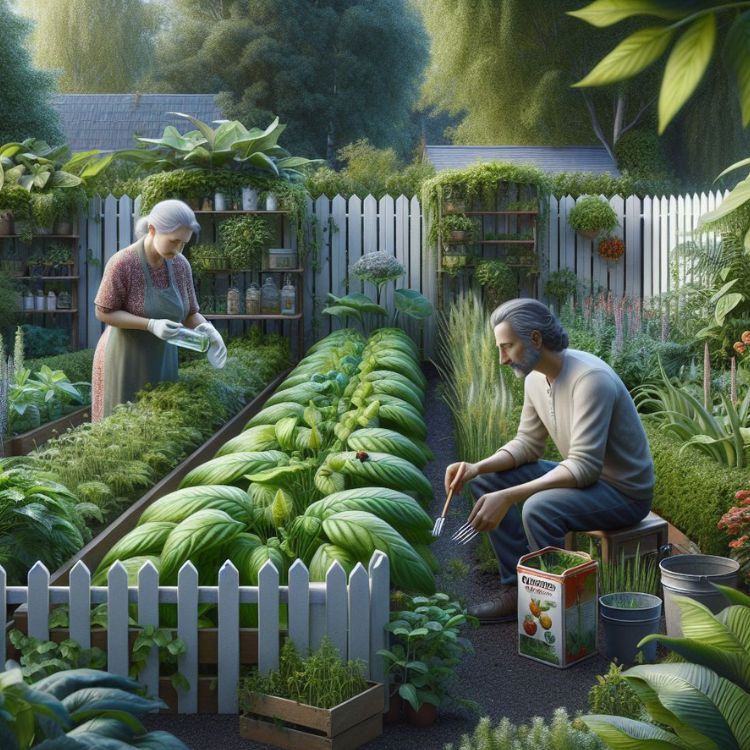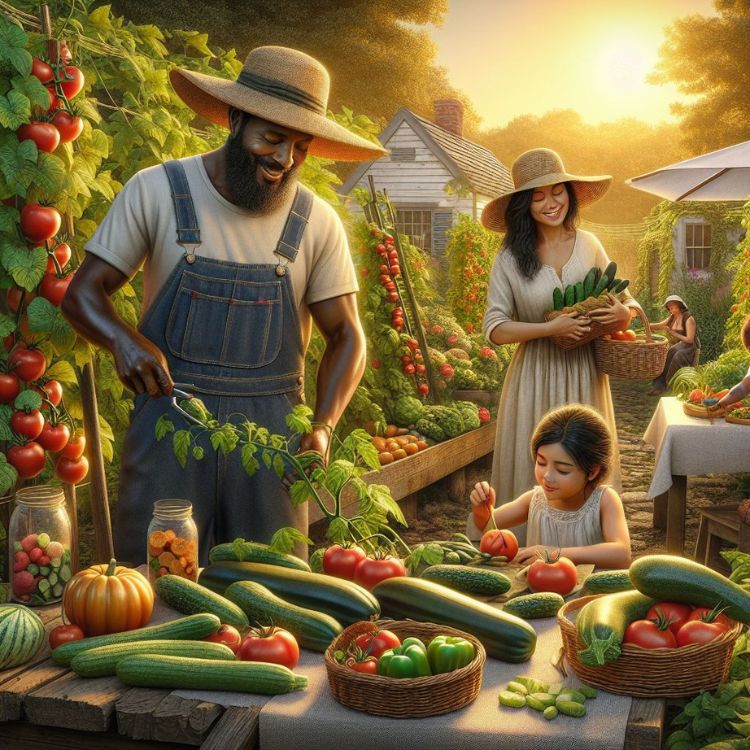
Gardening is a journey that connects us to the earth, our history, and to flavors that transcend the commonplace. If you’re looking to infuse your garden with a sense of wonder and continuity, rare heritage seeds are your ticket to an extraordinary adventure. Not only do these seeds offer a living link to gardening traditions of the past, but they also promise a bounty of tastes and textures that you simply won’t find at your local supermarket.
Key Takeaways
- Heritage seeds can adapt to your local climate and soil, offering robust growth and unique flavors.
- Proper soil preparation and understanding each plant’s needs are crucial for successful heritage seed gardening.
- Natural pest control and disease management are essential for maintaining the integrity of heritage varieties.
- Seed saving from your best plants ensures a personal supply of rare seeds for future seasons.
- Engaging with a community of fellow gardeners enriches your experience and supports the conservation of heritage varieties.
Discover the World of Rare Heritage Seeds
Imagine biting into a tomato that bursts with flavor, its seeds handed down through generations, or harvesting carrots whose colors are as varied as a painter’s palette. This is the world that rare heritage seeds invite you to explore. These seeds are not just plants; they’re stories of human history and tradition, preserved in tiny, potent packages. They are the heirlooms of our agricultural heritage, and they need gardeners like you to keep their stories alive.
Unearth Unique Flavors and Textures
Heritage seeds, often called heirlooms, bring to your table a symphony of flavors that modern hybrids can’t replicate. They’ve been naturally selected for their taste, color, and resilience over centuries. These seeds are open-pollinated, meaning they reproduce true to type, allowing you to save seeds from your harvest and grow the same variety year after year.
Contribute to Biodiversity and Cultural Legacy
When you plant heritage seeds, you do more than grow food. You become a guardian of genetic diversity, which is crucial in a world where agricultural varieties are rapidly disappearing. Each rare seed you nurture helps to maintain a wide genetic pool, which is vital for food security and environmental resilience. Moreover, you’re preserving cultural histories, as many heritage seeds are intertwined with the stories of the people who cultivated them.
Choosing Your Heritage Seed Varieties
With so many intriguing options, selecting the right heritage seeds for your garden might seem overwhelming. But the key is to start with what excites you. Whether it’s the history behind a ‘Mortgage Lifter’ tomato or the stunning stripes of a ‘Dragon Carrot’, choose varieties that spark your interest. You’ll be more invested in their growth and more delighted by their harvest.
Understanding Climate Suitability
Heritage seeds often come with a backstory of where and how they were traditionally grown. Use this to your advantage. Seeds that thrived in conditions similar to yours are more likely to succeed in your garden. For example, if you live in a region with hot summers, look for varieties that were cultivated in the Mediterranean or the American South.
Most importantly, you’ll want to ensure that your chosen seeds can indeed flourish in your climate. Some plants need a longer growing season, while others might require a cooler environment. Check the seed packets or consult with seed suppliers to match your gardening zone with the right heritage seeds.
Soil Type and Seed Compatibility
Your soil is the foundation of your garden. Different heritage seeds will have preferences for soil type—some might love the loose, well-draining conditions of sandy soils, while others flourish in the dense nutrients of clay. Getting to know your soil type and amending it to suit your seeds will give your plants the best start.
Rarity, Historical Significance, and Personal Preference
Besides that, consider the rarity and historical significance of the seeds. Some varieties are incredibly rare, almost lost to time, and by growing them, you’re participating in a living history project. Personal preference also plays a huge role. Grow what you love to eat and share, and your garden will not only be a source of sustenance but also a place of joy.
Planting Your Heritage Seeds for Success
Once you’ve selected your seeds, the real fun begins. Planting with care and foresight sets the stage for a thriving garden. Each variety might come with its own set of instructions, so pay attention to the details. These seeds have been passed down because they’re tried and true, but they do require your attention and care to continue their legacy.
Preparing the Ideal Planting Environment
Before you even think about putting seed to soil, you need to prepare your garden bed. Clear the area of weeds and debris, and work the soil until it’s loose and friable. This is where your seeds will take root and find the nutrients they need to grow strong and healthy.
For example, if you’re planting ‘Scarlet Nantes’ carrots, they’ll need deeply tilled soil to accommodate their long roots. Neglecting this step could result in stunted growth and poor yield.
Therefore, consider the specific needs of your chosen varieties. Some plants might require a bit of shade, while others will only thrive in full sun. Position your garden beds accordingly, and remember to rotate your crops each year to prevent soil depletion and disease buildup.
Sowing Techniques for Different Seed Types
When it’s time to sow your seeds, think about each variety’s needs. Some seeds are best sown directly into the garden where they will grow, while others benefit from a head start indoors. Direct sowing is ideal for root crops like beets and carrots, as they don’t take well to transplanting. Other seeds, like tomatoes and peppers, might need the controlled environment of your windowsill to germinate before they brave the outdoors.
Understanding the preferences of your rare heritage seeds is crucial. They’ve been selected over generations for their ability to thrive in specific conditions. So, when you’re planting a seed, you’re not just burying it in the dirt; you’re giving it the best possible start in life.
Direct Sowing vs. Transplanting
Direct sowing involves planting seeds directly in the garden soil. It’s straightforward and ensures that your plants are perfectly adapted to their natural environment from the start. However, some seeds, especially those with longer growing seasons, may need to be started indoors to ensure they have enough time to mature before the end of the growing season.
Transplanting starts with sowing seeds in trays or pots indoors or in a greenhouse. Once the seedlings have grown strong enough, they’re moved to their final position in the garden. This method gives you a jumpstart on the season, which can be particularly helpful in regions with shorter growing times.
Sowing Depths and Spacing for Uncommon Varieties
Each seed has its own blueprint for success, and that includes how deep it should be planted and how much space it needs to spread its roots. A general rule of thumb is to sow seeds at a depth of about two to three times their diameter, but always check the packet for specific instructions. For spacing, give each plant enough room to grow to its full size—crowding can lead to competition for resources and increase the likelihood of disease.
Nurturing Your Seedlings
After your seeds are in the ground, your focus shifts to nurturing the young seedlings. They’ll need consistent moisture, especially during the critical phase of germination. A gentle touch is required—too much water can wash seeds away or encourage rot, while too little can spell the end for these delicate plants.
Watering Regimens
Watering is both an art and a science. Young plants are particularly sensitive to drought and flooding, so you’ll want to find a happy medium. The goal is to keep the soil moist but not waterlogged. If you’re not sure whether to water, stick your finger into the soil up to the second knuckle—if it’s dry at your fingertip, it’s time to water. For more urban survival garden tips on how to avoid common pitfalls and maximize your yields, be sure to check out our comprehensive guide.
Fertilization and Nutrient Requirements
Your heritage seedlings will also need the right nutrients to grow strong and healthy. A balanced, organic fertilizer can provide a steady supply of the essentials. However, be mindful of over-fertilizing, which can harm your plants and the environment. Follow the recommended rates on the fertilizer package, and consider getting a soil test to tailor your approach to your garden’s specific needs.
Managing Pests and Diseases in Heritage Plants

One of the challenges of gardening is dealing with pests and diseases. Heritage plants can be both resilient and vulnerable, depending on the variety and your local conditions. It’s important to monitor your plants regularly and take action at the first sign of trouble.
Natural Pest Control Strategies
Integrated Pest Management (IPM) is a sustainable approach to managing pests that combines biological, cultural, physical, and chemical tools in a way that minimizes economic, health, and environmental risks. For example, planting marigolds can deter certain nematodes, and encouraging beneficial insects like ladybugs can help control aphid populations.
Companion planting is another effective strategy. Some plants have natural substances in their roots or leaves that can repel pests, while others can attract beneficial insects. For instance, planting basil near tomatoes can help repel flies and mosquitoes.
Recognizing and Treating Common Ailments
Heritage plants, like all living things, can fall prey to diseases. Early detection is key to effective treatment. Keep an eye out for telltale signs like spots on leaves, stunted growth, or wilting. If you spot something amiss, remove the affected parts immediately and dispose of them away from your garden to prevent the spread of disease. For more information on maintaining the health of your garden, consider reading about soil health and insect/worm integration which can be vital for garden survival.
When it comes to treatment, opt for organic and natural remedies whenever possible. Neem oil, for example, is a natural pesticide that’s safe for use on food plants and is effective against a wide range of pests and diseases.
Heirloom-Specific Challenges and Solutions
Heirloom plants sometimes face unique challenges, like sensitivity to modern fertilizers or susceptibility to certain pests and diseases that have become more prevalent since these varieties were originally cultivated. To overcome these challenges:
- Choose the right location in your garden that matches the plant’s natural preferences for light and soil type.
- Use organic matter to improve soil structure and fertility without overwhelming your plants with synthetic fertilizers.
- Implement crop rotation to reduce the risk of soil-borne diseases.
By paying attention to the needs of your heritage plants and responding with care, you can enjoy a bountiful and beautiful garden that honors the past while sustaining the future.
Harvesting and Enjoying the Yield

After months of careful tending, nothing compares to the joy of harvesting the fruits of your labor. The unique flavors and textures of heritage vegetables and fruits are truly a reward for the senses. But how do you know when it’s the right time to harvest? Discover essential tips on mastering the language of greenery to determine the perfect harvesting time.
Identifying Harvest Readiness
Each plant variety has its own signs of ripeness. Tomatoes might need to reach a deep, even color; beans might need to feel plump within their pods. Familiarize yourself with the signs for each plant in your garden. Sometimes, the best indicator is taste—so don’t be afraid to sample a fruit or vegetable to check for flavor.
- Look for full color development and check for a slight give when you gently squeeze fruits.
- For leafy greens, harvest when leaves are tender and full-sized but before they’re too mature or tough.
- Root vegetables should be harvested when they’re the right size—not too small and not overgrown.
Remember, frequent harvesting encourages many plants to produce more, so don’t be shy about picking your produce when it’s ready.
Post-Harvest Care and Storage for Maximum Flavor
Once harvested, the clock starts ticking on freshness and flavor. To keep your garden bounty at its best, cool it down as quickly as possible. Most vegetables benefit from being stored in the refrigerator, but some, like onions and garlic, should be cured in a warm, dry place before long-term storage.
For the best taste, try to use your harvest as soon as possible. However, if you have more than you can eat right away, consider preserving your produce through canning, freezing, or drying. This way, you can enjoy the flavors of your garden long after the growing season has ended.
Preserving Your Heritage: Seed Saving Techniques
As your garden reaches the end of its cycle, you’re presented with a unique opportunity: saving seeds for next year’s planting. This age-old practice not only saves you money but also helps to preserve genetic diversity and adaptability. It’s a way to carry forward the legacy of your favorite plants.
Selecting the Best Specimens for Seed Saving
When it comes to seed saving, not all specimens are created equal. You’ll want to choose the healthiest, most robust plants as your seed sources. This ensures that the traits you value—flavor, size, disease resistance—are passed on to the next generation.
- Look for plants that are true to type, meaning they have the characteristics typical of their variety.
- Choose plants that have shown resilience to pests and diseases throughout the growing season.
- Harvest seeds from several plants to maintain genetic diversity within your seed stock.
Drying and Storing Seeds for Future Planting
Once you’ve harvested your seeds, they’ll need to be dried properly to preserve their viability. Spread them out on a screen or a dry paper towel in a well-ventilated area away from direct sunlight. When the seeds are dry enough that they crack rather than bend, they’re ready for storage.
Store your seeds in a cool, dark, and dry place. Envelopes, jars, or airtight containers can all work well, but make sure to label each container with the seed type and the date of harvest. Properly stored, many seeds can remain viable for several years.
Fostering a Gardening Community around Heritage Seeds
One of the most rewarding aspects of gardening with rare heritage seeds is the community you can build. Sharing seeds and experiences with fellow gardeners can enrich your knowledge and spread the joy of heirloom gardening.
Sharing Seeds and Knowledge with Fellow Gardeners
Whether it’s through informal seed swaps with neighbors or more organized events, sharing seeds is a cornerstone of the heirloom gardening community. It’s an opportunity to exchange tips, stories, and, of course, seeds. You might find yourself with a handful of a rare tomato variety or the seeds of an heirloom bean that’s been in someone’s family for generations.
Joining or Starting a Local Seed Library or Exchange
Seed libraries and exchanges are vital for preserving rare varieties and fostering community among gardeners. By joining one, you can contribute to and benefit from a collective pool of diverse seeds. If there isn’t one in your area, consider starting one. It’s a fantastic way to bring local gardeners together and ensure a rich variety of plants for everyone to enjoy.
FAQs: Unraveling the Mysteries of Heritage Seeds
Even with the best tips and techniques, you might still have questions about heritage seeds. Here are some answers to the most common queries.
What Makes a Seed ‘Heritage’ or ‘Heirloom’?
A seed is considered ‘heritage’ or ‘heirloom’ if it’s been passed down through generations, typically at least 50 years, and maintained in its original form without genetic modification. These seeds are valued for their genetic diversity, historical significance, and exceptional flavor profiles.
How Do I Know if a Heritage Seed Will Grow in My Region?
Most heritage seed packets will include information on the best growing conditions for that variety. You can also do a bit of research on the seed’s origin—seeds that come from a similar climate to yours are more likely to thrive. Local gardening groups and seed libraries are also excellent resources for finding out what grows well in your area.
Can I Grow Heritage Varieties in Containers?
Absolutely! Many heritage seeds can be successfully grown in containers. Just make sure to choose container-friendly varieties and provide adequate space, nutrients, and water. Container gardening is a great option if you have limited space or want to control the growing conditions more closely.
What Are the Most Unusual Heritage Seeds to Try?
The world of heritage seeds is full of unique and intriguing options. From the ‘Glass Gem’ corn, with its jewel-like kernels, to the ‘Turkish Orange’ eggplant, there’s no shortage of fascinating varieties to explore. Here are a few to consider:
- ‘Chioggia’ beets, with their stunning candy-striped interiors
- ‘Rattlesnake’ pole beans, known for their purple streaks and excellent flavor
- ‘Moon and Stars’ watermelon, with its celestial-patterned rind
How Can I Find Authentic Rare Heritage Seeds?
Finding authentic rare heritage seeds can be as simple as visiting a reputable online retailer, like Survival Essentials, which specializes in a wide array of heritage and heirloom seeds. Local nurseries, garden clubs, and seed swaps are also excellent places to discover rare seeds. Always look for suppliers who provide detailed histories and growing instructions for their seeds, as this is often a sign of quality and authenticity.
As you delve into the world of rare heritage seeds, remember that you’re participating in a tradition that dates back millennia. Each seed you plant is a story, each harvest a chapter in an ongoing saga of human and plant partnership. So, choose your seeds with care, tend to your garden with love, and share your bounty and knowledge with the world. Together, we can ensure that these living legacies continue to thrive for generations to come.






